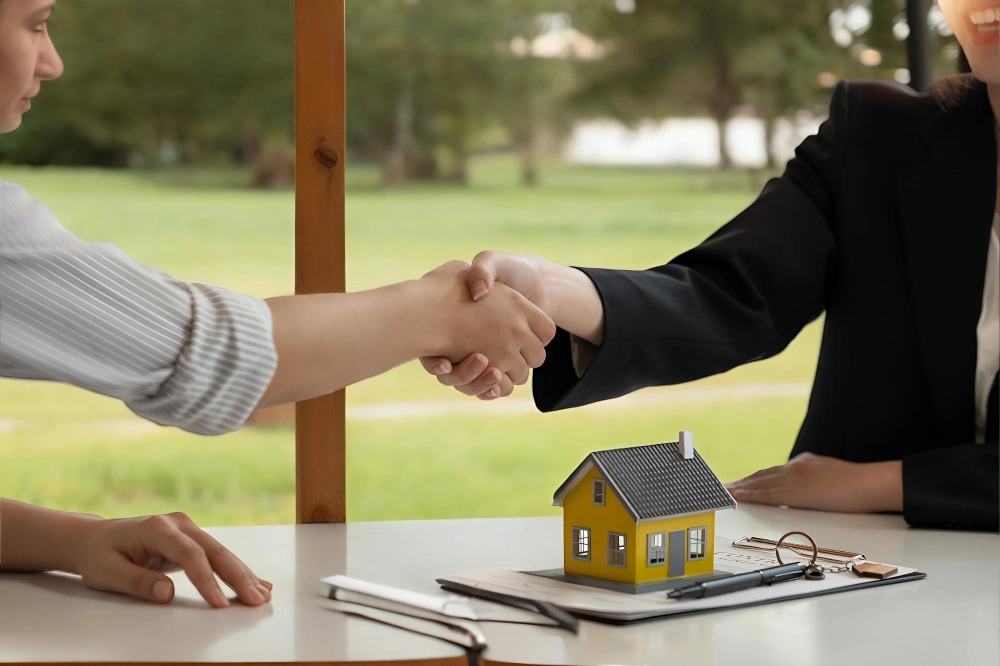Do you know what the differences are between debit and credit cards? Sometimes, many people still think that these two cards are the same. In fact, of course they are different, both in terms of physical, usability, costs, limits, security, source of funds and additional features.
So, for those of you who want to know the differences between debit and credit cards along with the conditions for making them and tips, you can check the complete review below.
1. Definition of Debit and Credit Cards
Before knowing the difference between debit and credit cards, you must first know the definitions of the two cards, namely:
1.1 What is a Debit Card?
A debit card is a card issued by a bank so that customers can use it to withdraw money directly according to the signed agreement.
Usually, debit cards are used to pay in full obligations that arise from economic activities, one of which is shopping transactions. However, the amount of money you can spend is determined by the amount of funds from the account connected to the debit card.
Apart from that, using a debit card is not like a credit card which makes you have to owe the amount of money you spend. Because the debit card takes your own funds. This means that the money you spend using a debit card is your own money stored in the account.
There are several debit card functions that you need to know, namely:
- Debit cards are used as a means of withdrawing cash via ATM machines from related banks or other banks (Himbara ATM)
- Transfer to other and different accounts via ATM
- You can use it as a tool to pay bills, such as telephone, electricity bills and others
- Check the remaining balance via ATM
- Payment tool for shopping at various merchants who have collaborated with the relevant banks.
1.2 What is a Credit Card?
Credit cards are non-cash payment instruments in the form of cards that have been issued by banks. You can use a credit card to shop for daily needs and others.
The nominal amount of money you spend will be paid first by the bank. Furthermore, at the beginning of each month, you must pay the specified amount to the bank concerned.
This definition is in accordance with Bank Indonesia Regulations through SEBI (Bank Indonesia Circular Letter) relating to Card Payment Instruments (APMK).
Often credit cards offer various attractive promos, so that customers are tempted to make them. In fact, now credit cards have become an alternative method for modern society to carry out credit transactions, such as online shopping, purchasing electronic goods and even holidays.
Apart from online and offline payments, credit cards also have several other functions, namely:
- You can use it or use it as an emergency fund because it can be used at any time
- Can be used to record monthly expenses because all transaction activities are listed in detail
- Some banks offer insurance services to customers who use their credit card services
- Limits are usually set according to the customer's monthly income.
From the two definitions above, it can be concluded that a debit card is a direct payment tool without debt that you can use for online and offline transactions. Meanwhile, credit cards are a means of paying for credit or debt, where you can shop using the available limit, then pay it regularly every month according to the limit you use.
2. 7 Differences between Debit and Credit Cards
After knowing the meaning of the two cards, now is the time to start knowing the differences between debit and credit cards that you should know, namely:
2.1 Physical Card
At first glance, the physical appearance of debit and credit cards looks the same. Because the size, number of digits, logo position and main features of the back and back of the card look similar.
However, if you look carefully, there are differences that each other does not have.
Credit cards have a more elegant design with varying levels of card types, such as platinum and gold. The color of the design is also busier than debit cards, which usually have plain designs.
In addition, credit cards include account holder information on the front and the validity period of the card. Meanwhile, debit cards do not include the name of the owner or the validity period of the card itself.
The difference between other physical cards is the application of a chip which is always present on credit cards, whereas not all debit cards have a chip. However, currently Bank Indonesia (BI) is starting to target many local banks to start implementing chips instead of magnetic stripes on their debit cards.
2.2 Use or Benefits
In terms of use or benefits, debit and credit cards are quite different, including:
2.2.1 Benefits of Debit Cards
- Can be used for practical shopping because you only need to swipe the card to the EDC machine in various supermarkets, restaurants, shops and other places
- The money on the debit card is not a loan from the bank, namely your own money stored in the account
- You can withdraw money from your debit card via ATM if you need cash
- There are various attractive promotions and discounts available when shopping using a debit card from certain banks
- Has small administration fees
- Can be used to pay various bills, such as electricity, credit and money transfers
- Can make large transactions.
2.2.2 Benefits of Credit cards
While the benefits of credit cards consist of:
- Has lots of promos, discounts, cashback and 0% installments
- Some banks provide cash withdrawal services on credit cards
- Provide reward points for customers who actively shop using certain types of credit cards
- You can use it for foreign transactions
- The payment process via credit card is instant and safe.
2.3 Fees
The fees charged for using debit and credit cards are also different.
Here are some fees that may be charged when using a debit card, namely:
- ATM card printing fees
- Fees for cash withdrawals at ATMs differ
- Replace your debit card if it is damaged or lost
- Transfer to another bank
- Administration fee per month (varies depending on the type of card and each bank's policy)
- Account closure.
Meanwhile, the costs contained in credit cards include:
- Annual administration fee (varies depending on bank policy and card type)
- Late payment
- Fees if you exceed the usage limit
- Print bills
- Cost to replace the card if it is damaged or lost
- Cash withdrawal fees
- Cancellation of installments
- Bill payment fees.
2.4 Limits
Debit cards do not apply usage limits, as long as you still have a balance in your account. However, for daily use, there are certain limits which vary from each bank.
Meanwhile, credit cards have limitations or usage limits according to the type and policies of each bank. Usually, the limit for credit cards starts from IDR 3 million to hundreds of millions depending on the type and bank policy.
2.5 Sources of Funds
The difference between debit and credit cards can then be seen from the source of funds used in each transaction.
The debit card is tied directly to your account. So when making a transaction using a debit card, the balance in the account will be withdrawn automatically for payment. Therefore, the source of funds in a debit card is your own account balance.
Meanwhile, the source of funds in a credit card comes from the bank that issued the card. So, when you use a credit card for transactions, you are actually borrowing money from the card issuer. Then, you are obliged to pay back the amount of money borrowed every month before the maturity date.
In addition, you can use a credit card to make payments even if you don't have a balance in your account. Because, making this card has nothing to do with or is not tied to the balance in your account.
2.6 Additional Features
Debit and credit cards have a number of additional features that are advantages of each card.
Several additional features of debit cards include online shopping, cash deposits via ATM, autodebit, installment payments, e-money, accident insurance as well as discounts and promos.
Meanwhile, additional features available on credit cards depend on the bank itself, namely travel insurance, access to airport lounges, cashback, concierge services, long-term installments and purchase protection.
2.7 Security
The security of a debit card is in the form of a 6-digit PIN which you must enter every time you make a transaction. You must change this PIN number regularly to avoid account hacking and other problems.
Meanwhile, credit card security uses three important numbers, namely the credit card number, CVV code and expiration date. The CVV code is located on the back of the card with 3-4 digits for the payment authentication process. In fact, several banks have now added new security, namely sending security codes via SMS when making transactions.
3. Requirements for Making Debit and Credit Cards
After knowing the differences and being interested in getting one of the cards, be it a debit or credit card, you must first know the requirements.
Here are some general requirements for making a debit and credit card that you can pay attention to, namely:
3.1 Requirements for Making a Debit Card
- KTP
- Family card or driving license
- NPWP (if any)
3.2 Conditions for Making a Credit Card
- KTP
- Minimum age 21 years
- Minimum net income per month of IDR 3 million (this provision may vary depending on the bank)
- NPWP
4. Types of Debit and Credit Cards
There are several types of debit and credit cards that you can choose according to your needs and abilities, namely:
4.1 Types of Debit Cards
There are 4 types of debit cards that you can choose from, including:
4.1.1 Regular Debit Card
Regular debit cards are issued by banks or credit unions and are connected to checking accounts or money market accounts. Usually, this card has the VISA, Discover and Mastercard logos which you can use to shop offline or online. Apart from that, you can use a regular debit card to deposit cash and withdraw account balances from ATMs.
4.1.2 ATM Card
Not much different from regular debit cards, ATM cards are also issued by banks and are linked to certain accounts. However, you can only use an ATM card for online shopping transactions and directly in stores or to withdraw and transfer money from ATM machines.
4.1.3 Prepaid Debit
Next, there is a prepaid debit card connected to the account, but not issued by the bank concerned. Before using, you must top up your prepaid debit card with funds first.
Meanwhile, its use is still the same as a regular debit card, but has its own services, for example e-money or electronic money.
4.1.4 Electronic Benefits Transfer Card (EBT or Electronic Benefits Transfer)
The final type is the electronic benefit transfer card or EBT which is issued by the government to provide social benefits to card holders. This card can be used at various merchants that accept payments via EBT cards. One example of an EBT card that is often found is the Smart Indonesia Card (KIP).
4.2 Types of Credit Cards
Meanwhile, the types of credit cards consist of:
4.2.1 Credit Cards Based on Region of Application
- International Credit Card: a credit card used for international transactions because it collaborates with foreign organizations, such as Visa and Mastercard.
- National Credit Card: A credit card that you can use on a national scale or only within the country.
4.2.2 Credit Cards Based on Limits
- Silver: Silver cards have the lowest limit, which is around IDR 4-7 million and are suitable for those of you who have a net income of around IDR 3 million.
- Gold: The gold credit card limit is around IDR 10-40 million and is suitable for customers with an income of IDR 5-10 million.
- Platinum: Platinum credit card limits are relatively high, starting from IDR 40-1 billion. This card is suitable to choose if you have an income of around IDR 180 million per month.
- Titanium or Special: This type of titanium credit card is much higher than platinum and is exclusive specifically for people chosen by the banking sector. Therefore, not just anyone can get this special type of credit card.
4.2.3 Credit Cards Based on Affiliation
- Co-Branding Credit Card: Card issued based on collaboration between the bank and management institutions, such as Mastercard and Visa.
- Private Label Card: A card issued by the bank itself without any affiliation with a global organization.
- Affinity Card or Agency Card: A credit card that collaborates with an agency, such as a university or company. For example, the bank collaborates with a university to create a credit card as well as a student card.
5. Tips for Using Debit and Credit Cards
In order to use your debit and credit cards wisely, make sure you follow the following tips:
- Make sure you have more than one debit card so that your special shopping budget is not combined with your budget for other needs.
- Set a maximum daily credit and debit card limit for shopping, for example IDR 3 million per day.
- Make sure you shop at trusted merchants and always keep your debit card PIN confidential.
- Choose the type or types of credit card according to your needs.
- Pay credit card bills in full and on time to avoid large fines.
- Make sure you only use your credit card to buy important items, such as a washing machine.
- Avoid using a credit card to withdraw cash because there are quite high additional fees.
- Avoid using credit cards to pay debts and daily needs.
- Take advantage of bonuses and promos provided by credit cards.
These are some of the differences between debit and credit cards along with the complete conditions for making them and tips. Actually, both cards are equally useful. However, if you don't want to have debt, it's better to use a debit card as a transaction tool. However, if you already have a steady income and are willing to pay credit every month, then you can use a credit card for transactions.
---
BFI Finance is a trusted financing company in Indonesia that has been established since 1982. We provide financing for various needs such as business capital, education, home renovations, and consumer needs. Pledge your vehicle BPKB or house certificate to get a fast and easy financing process. Enjoy high disbursement (80% of vehicle value) and competitive interest rates! #SelaluAdaJalan with BFI Finance.






